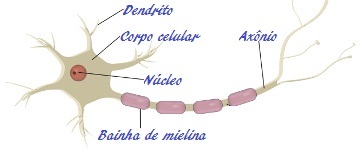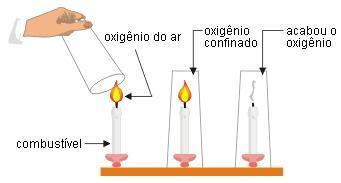Our nervous system is composed of several cells, among them, neurons, also called nerve cells, stand out. These cells are able to transmit nerve impulses and stimulate other cells, thus allowing responses to environmental stimuli. Without neurons we would not be able, for example, to feel pain or a caress, to move, to reason, to express emotions, among several other functions.
Neurons are made up of some basic parts. See the diagram below:

Look at the basic parts of a neuron
O cell body this is where we find the cell's nucleus, which is normally round and quite large. From the cell body it is possible to observe some prolongations. Of these, the shortest and full of branches, which resemble tree branches, are called dendrites. The longer ones that branch only at the end are called axon.
The axon is usually single in a neuron and may have a coating known as a myelin sheath, which is formed by the coiling of the plasma membrane of several cells, which can be Schwann cells or oligodendrocytes
. This coating acts as an insulator, preventing the passage of the nerve impulse in these places. The impulse then jumps to places where the sheath is not present.The end of the neuron is very close to the neighboring cell without, however, touching it. This region of extreme proximity is called the synapse. At synapses, a neuron releases a substance, called a neurotransmitter, which allows the nerve impulse to be stimulated and passed to another cell.
According to their function, neurons can be classified into three basic types:
Sensory neuron:It picks up and carries nerve impulses from the sense organs to the brain and spinal cord, which make up the central nervous system.
Motor neuron:It drives the central nervous system response to muscles and glands.
Associative neuron: Connect one neuron to another.
Curiosity: In our body there are about 86 billion neurons.
By Ma. Vanessa dos Santos


